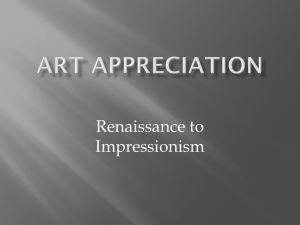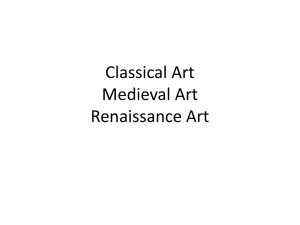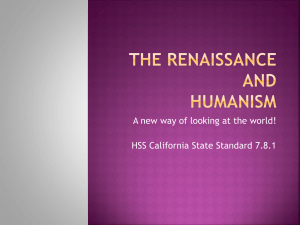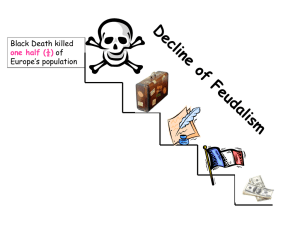Renaissance Means rebirth Refers to explosion of art and
advertisement
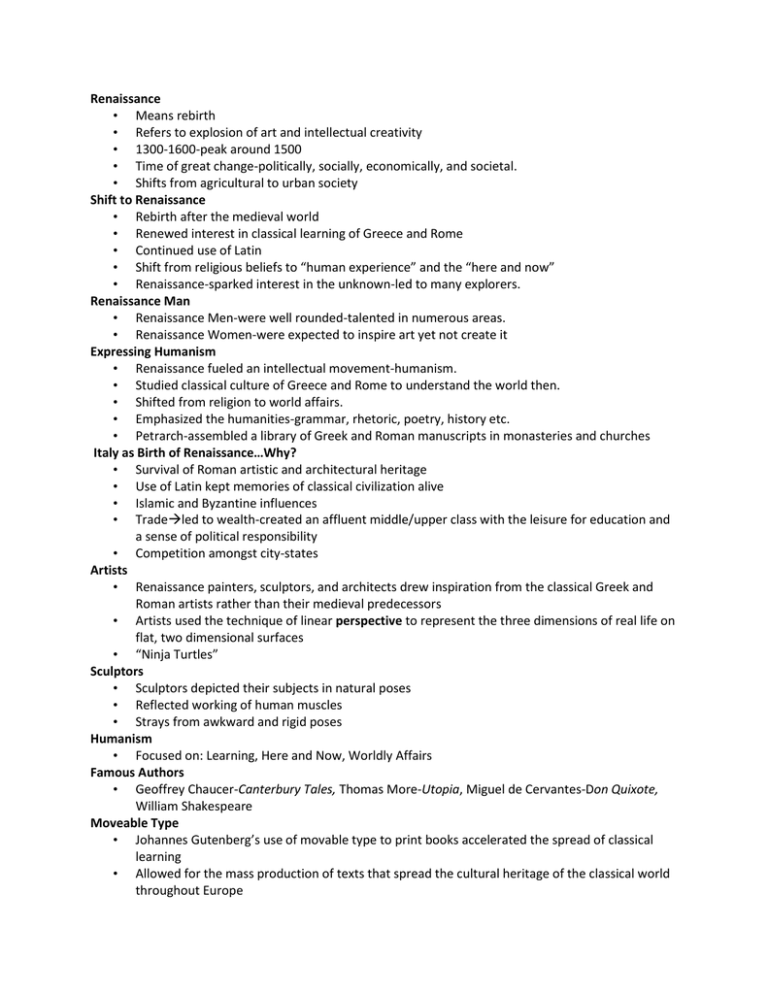
Renaissance • Means rebirth • Refers to explosion of art and intellectual creativity • 1300-1600-peak around 1500 • Time of great change-politically, socially, economically, and societal. • Shifts from agricultural to urban society Shift to Renaissance • Rebirth after the medieval world • Renewed interest in classical learning of Greece and Rome • Continued use of Latin • Shift from religious beliefs to “human experience” and the “here and now” • Renaissance-sparked interest in the unknown-led to many explorers. Renaissance Man • Renaissance Men-were well rounded-talented in numerous areas. • Renaissance Women-were expected to inspire art yet not create it Expressing Humanism • Renaissance fueled an intellectual movement-humanism. • Studied classical culture of Greece and Rome to understand the world then. • Shifted from religion to world affairs. • Emphasized the humanities-grammar, rhetoric, poetry, history etc. • Petrarch-assembled a library of Greek and Roman manuscripts in monasteries and churches Italy as Birth of Renaissance…Why? • Survival of Roman artistic and architectural heritage • Use of Latin kept memories of classical civilization alive • Islamic and Byzantine influences • Tradeled to wealth-created an affluent middle/upper class with the leisure for education and a sense of political responsibility • Competition amongst city-states Artists • Renaissance painters, sculptors, and architects drew inspiration from the classical Greek and Roman artists rather than their medieval predecessors • Artists used the technique of linear perspective to represent the three dimensions of real life on flat, two dimensional surfaces • “Ninja Turtles” Sculptors • Sculptors depicted their subjects in natural poses • Reflected working of human muscles • Strays from awkward and rigid poses Humanism • Focused on: Learning, Here and Now, Worldly Affairs Famous Authors • Geoffrey Chaucer-Canterbury Tales, Thomas More-Utopia, Miguel de Cervantes-Don Quixote, William Shakespeare Moveable Type • Johannes Gutenberg’s use of movable type to print books accelerated the spread of classical learning • Allowed for the mass production of texts that spread the cultural heritage of the classical world throughout Europe



